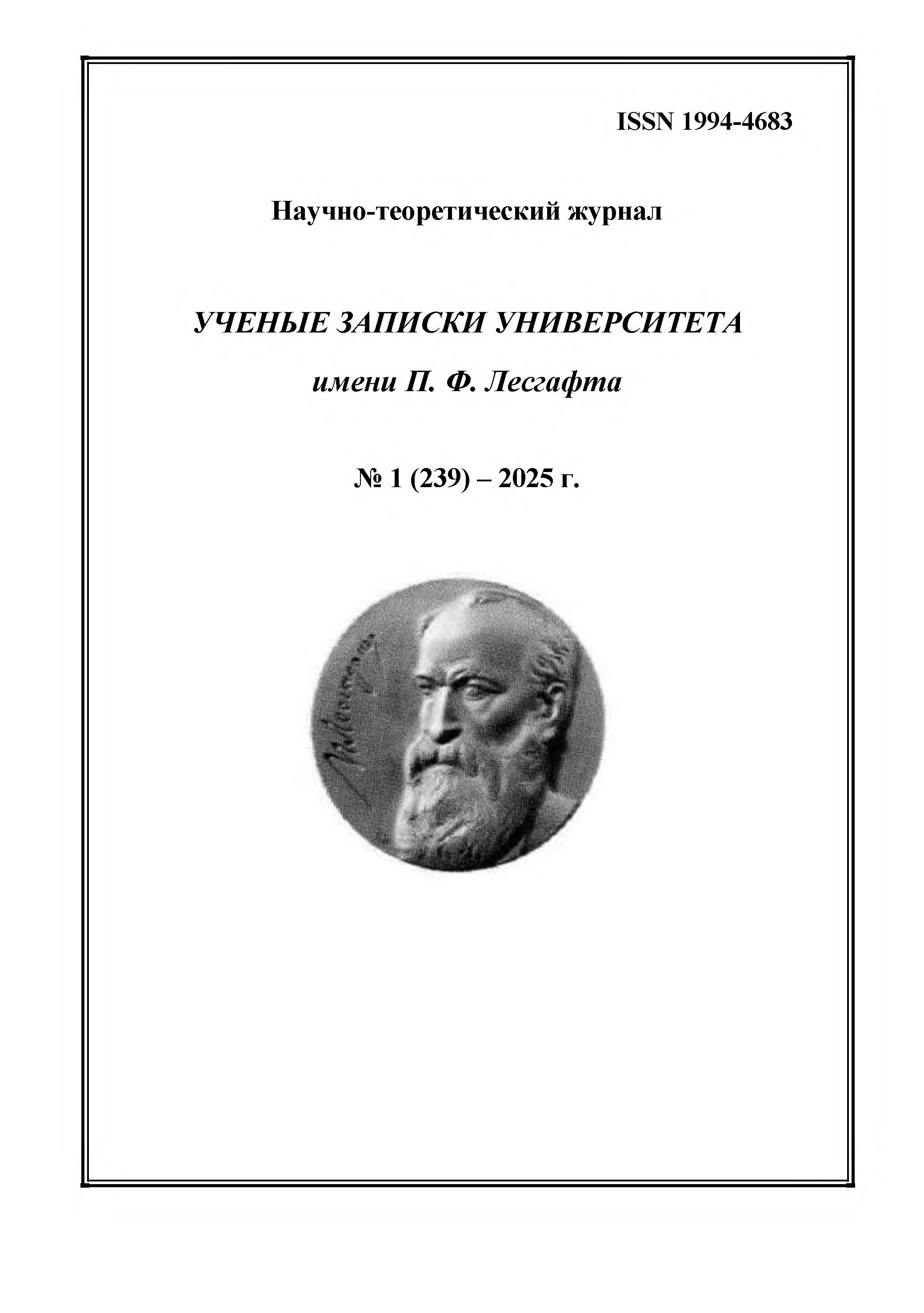employee from 01.01.2025 to 01.01.2025
Glinkin Rehab Center (Department of Rehabilitation and Physical Training, Head of Sports Department)
employee from 01.01.2022 to 01.01.2024
Sportclinic (Department of physical therapy, Physical therapist)
employee from 01.01.2020 to 01.01.2022
St. Petersburg, Russian Federation
CSCSTI 77.01
The purpose of the study is to assess the effectiveness of using force platforms in the training process for the development of explosive power in professional athletes. Research methods and organization. The study employed theoretical analysis and the synthesis of literary sources, program design, testing, pedagogical experimentation, and methods of mathematical statistics. The research was conducted over eight weeks at the Physical Training Center (Chelyabinsk) with the participation of 14 qualified athletes (football players and track and field athletes). The program included an alternating schedule of technical, power, and recovery training sessions with linear progression. Research results and conclusions. At the conclusion of the experiment, a statistically significant improvement was recorded in jump height, power, and rate of force development. The obtained data indicate the high effectiveness of using strength platforms in plyometric training and confirm the advisability of their application in the work with professional athletes.
sports training, strength platform, explosive power, sports biomechanics, feedback, individual approach
1. Platonov V. N. (2015), “System of athlete preparation in Olympic sports”, Kyiv.
2. Gavryushkin A. N., Kutimsky A. M. (2021), “Optimization of the development of speed and strength qualities of athletes in game sports”, E-Scio, No. 11 (62), pp. 126–134.
3. Suchomel T. J., Nimphius S., Stone M. H. (2016), “The importance of muscular strength in athletic performance”, Sports Medicine, 46 (10), pp. 1419–1449, DOIhttps://doi.org/10.1007/s40279-016-0486-0.
4. Turner A. N. [et al.] (2017), “Strength and conditioning for sports performance”, Routledge, 360 p.
5. Bosch R. (2015), “Strength training and coordination”, Springer, 339 p.
6. Verkhoshansky Yu. V. (2022), “Fundamentals of special strength training in sports”, 4th ed., Moscow, Soviet Sport, 216 p., ISBN 978-5-00129-086-5.
7. McGuigan M. R. (2012), “Monitoring training and performance in athletes”, Human Kinetics, 2017, 264 p., DOIhttps://doi.org/10.5040/9781492595618, ISBN 9781492535201.
8. Williams C., Sullivan K., Kim C., Winchester L. J., Fedewa M. V. (2025), “Using force plates to monitor the recovery of vertical jump performance after strenuous exercise: A systematic review and meta-analysis”, Journal of Functional Morphology and Kinesiology, Vol. 10, No. 2, p. 230, DOIhttps://doi.org/10.3390/jfmk10020230.
9. Vasavada K. D., Lin C. C., Rynecki N. D., Shankar D. S., Avila A., Buzin S., Chen A. L., Carter C., Borowski L. E., Milton H., Gonzalez-Lomas G. (2023), “Force plate testing is correlated with jumping performance in elite Nordic skiers”, Journal of Cartilage & Joint Preservation, Vol. 3, No. 7, p. 100144, DOIhttps://doi.org/10.1016/j.jcjp.2023.100144.
10. (2025), “Hawkin Dynamics”, https://www.hawkindynamics.com/ (accessed July 15, 2025).
11. Cabarkapa D., Cabarkapa M., Aleksic J., Ranisavljev I., Fry A. C. (2024), “Does the short-term learning effect impact vertical jump performance assessment on a portable force plate system?”, Frontiers in Sports and Active Living, Vol. 6, pp. 1–12, DOIhttps://doi.org/10.3389/fspor.2024.1441022.
12. Benson L.C., Quinlan J., Heller B.W. (2020), “Monitoring workload in team sports with wearable technology”, Journal of Orthopaedic & Sports Physical Therapy, Vol. 50, No. 10, pp. 549–563, DOIhttps://doi.org/10.2519/jospt.2020.9753.
13. Lorenz D., Morrison S. (2015), “Current concepts in periodization of strength and conditioning for the sports physical therapist”, International Journal of Sports Physical Therapy, Vol. 10, No. 6, pp. 734–747.
14. Balsalobre-Fernández C., Torres-Ronda L. (2021), “The implementation of velocity-based training paradigm for team sports: framework, technologies, practical recommendations and challenges”, Sports, Vol. 9, No. 4, p. 47, DOIhttps://doi.org/10.3390/sports9040047.
15. Issurin V. B. (2008), “Block periodization: Breakthrough in sport training”, Ultimate Athlete Concepts, 226 p., ISBN 9780981718002.
16. Zatsiorsky V. M., Kraemer W. J. (2006), “Science and practice of strength training”, Human Kinetics, 2006. 251 p. ISBN 9768-0-7360-5628-1.
17. Kraemer W. J., Ratamess N. A. (2004), “Fundamentals of resistance training: progression and exercise prescription”, Medicine and Science in Sports and Exercise, 36 (4), pp. 674–688, DOIhttps://doi.org/10.1249/01.mss.0000121945.36635.61.
18. Zankovets V. E. (2016), “Encyclopedia of Testing”, Moscow, Sport, 320 p.






